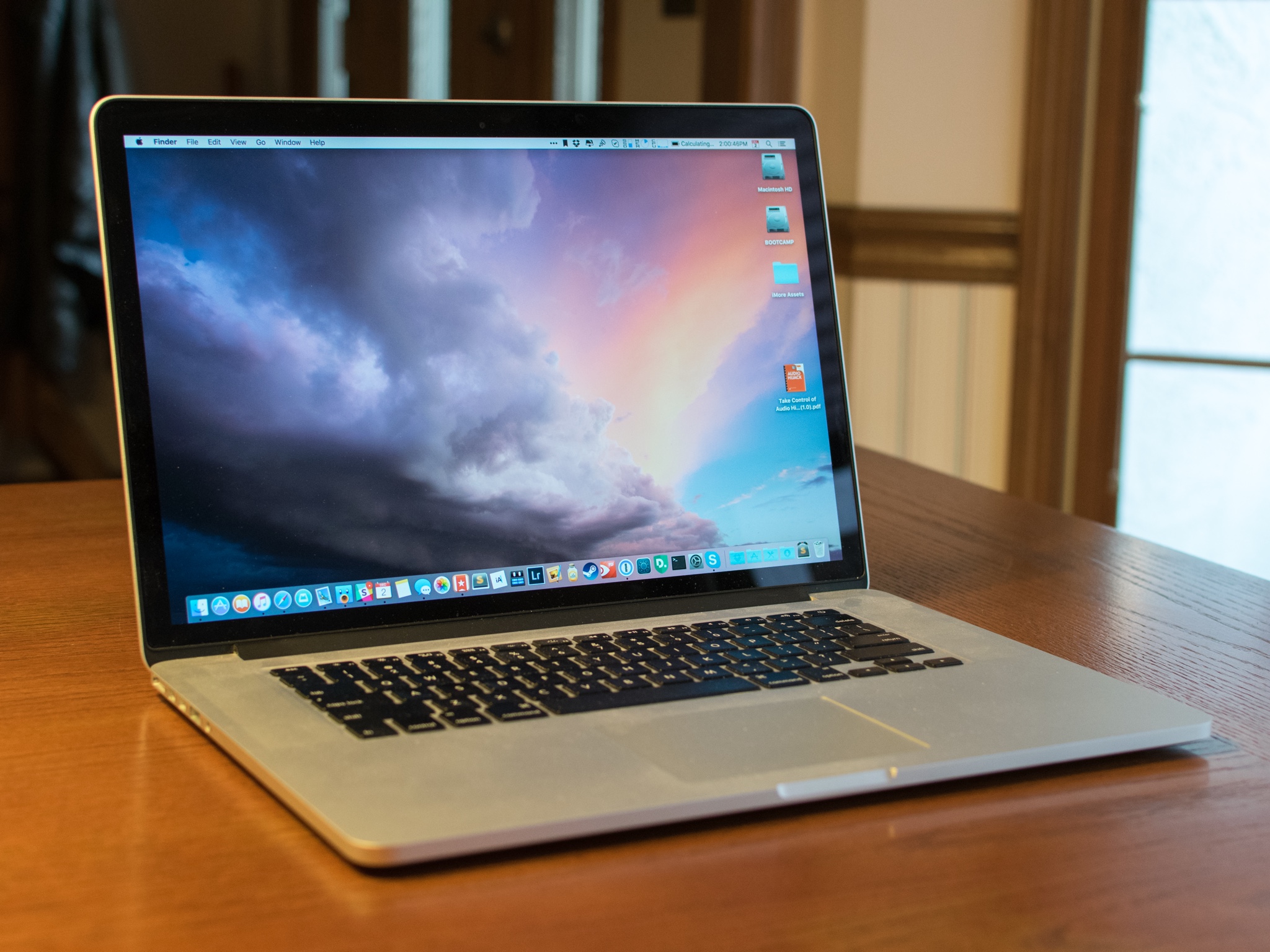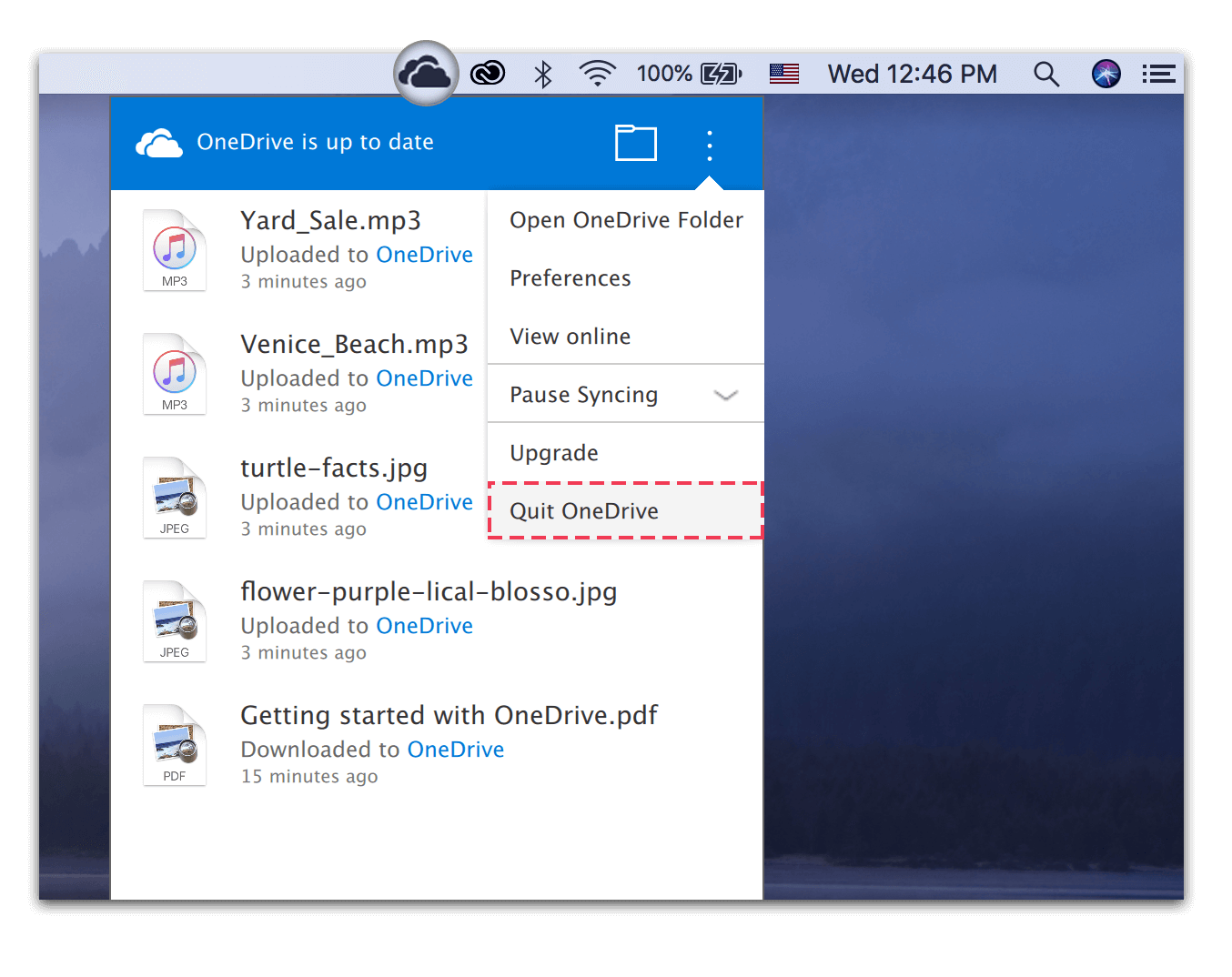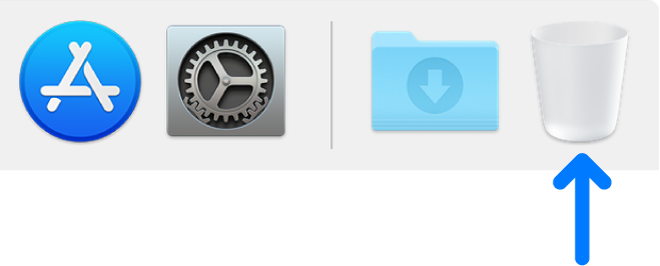- 1. Mac Files Tips
- 2. Mac Software
- 3. Mac Storage Tips
- 4. Mac Troubleshooting
- 5. Mac OS
These cache files created by all the apps that you use on Mac. It includes apps that came with your macOS (like Mail) as well as 3rd-party apps (like Sketch). Every applications creates a lots of cache - it wouldn’t be surprising to clear up gigabytes of space when cleaning app caches. Aug 10, 2018 Clean My Mac also has some other useful tools, such as an Uninstaller for cleaning up old applications, maintenance scripts, and a shredder for securely deleting files. It also has a tab that lets you view large files, albeit in a list view rather than the partitioned interfaces of Disk Inventory or DaisyDisk.
by Sophie GreenUpdated on 2020-05-27 / Update for Mac OS
- Jul 02, 2020 The longer you have a PC, the more unnecessary, temporary, or duplicate files will accumulate on your disk. These files take up space that may cause your PC to run slower or take up space on your hard drive. By deleting or consolidating these files you can easily boost your PC's performance and open up room for new files.
- Jul 02, 2020 The longer you have a PC, the more unnecessary, temporary, or duplicate files will accumulate on your disk. These files take up space that may cause your PC to run slower or take up space on your hard drive. By deleting or consolidating these files you can easily boost your PC's performance and open up room for new files.
- How to clear cache files on Mac Cache is basically a technical data that is stored when an app, browser or system performs a task. Cache files serve a vital function as they contain a “shortcut” to a task in order to perform it faster the next time.
- The iOS files include all the backups and software update files of iOS devices that are synced with your Mac. While it is easier to use iTunes to back up your iOS devices data but over time, all the old data backup could take up a significant chunk of storage space on your Mac.
- May 17, 2019 Cache and temporary files can include everything from web browser cache and history, including cookies and passwords, to messaging cache folders, partially completed downloads, app temp files and folders, and so much more that is taking up space on your Mac.
Owning a Mac is a significant investment. It's not only the fastest and best performing system but is also packed with unlimited features and above all unlimited amount of storage space.
As a Mac user, unlimited storage is the biggest attraction; however, over time, the same unlimited storage can become full, and you might find yourself in the situation of running out of storage space. However, there are options to upgrade the system with new internal drives easily. But, this feature does not apply to all Macs.
Part 1: What are iOS Files on Mac
If you've owned iOS devices for years, you would likely have backed up your iOS devices' data to your Mac. Or, you might have used iTunes to search and install iOS apps. It means that your Mac is using a lot of space to hold these backups, which are known as iOS files.
iOS files can be found on Mac > Storage > Manage.
The iOS files include all the backups and software update files of iOS devices that are synced with your Mac.
While it is easier to use iTunes to back up your iOS devices data but over time, all the old data backup could take up a significant chunk of storage space on your Mac. If the backups are no longer needed or you need to free up storage space, then the best options are to delete old backups or iOS files.
Read on to find the ways you can delete iOS files on Mac and how to free up storage space.

Part 2: Can I Delete iOS Files on Mac? How to Delete iOS Files on Mac
Yes, iOS files can easily be deleted on Mac. If you come across the situation where you are prompted that storage is full or you are running low on storage, the first step is to delete iOS files on Mac.
Here is a step-by-step process on how you can easily delete iOS files on Mac.
Step 1: Locate iOS files on Mac. To do so, first, click the Apple button on the top left and click About this Mac. Next, click the Storage tab to view the various categories taking up storage space on your Mac.
Here you will see if iOS files are taking up a significant portion of your storage space. If so, you have backups that need to be moved or deleted to make more space.
Step 2: Click the Manage button and then iOS Files in the left column. To view the local iOS backup and files that have been stored on your Mac.
Step 3: If you no longer need any of the backups, select it and click the Delete button to move it to the Trash and then Empty Trash as well.
You can also move the backup to external storage. For that click Show in Finder button and drag them to external hard drive or storage location.
Part 3: Some Tips to Free Up Space on Mac
While deleting iOS files is one way of freeing up storage space on Mac. However, there are other ways to free up more space on your Mac too.
Here are some easy tips on how you can easily free up more storage space on Mac without doing much, literally.
To free up space, the first step always is to find out how much storage space is available on your Mac and which files are taking up a major chunk of storage on your system.
To do that, click on the Apple Menu > About this Mac > Storage.
This will give an overview of storage space usage. It will show how much free space is available on your Mac and which categories of files are taking up a significant portion of your storage space.
Then click the Manage button. It will open the Storage Management window.
This window provides a recommendation by carefully categorizing files. From here, you can see which large files are taking up more space, and you can easily delete those files.
1. Clean Up Downloads and Trash
The biggest difference in freeing up storage space can be seen just by cleaning up downloads and Trash. The download folder stores everything you have ever downloaded to your Mac. And if you’ve never cleaned it up before, it does take up a major portion of storage.
Here’s how to clean up downloads and trash to free up space on Mac.
Step 1: Click Finder (it will be a smiley icon on your Dock).
Step 2: Go to Downloads in the left sidebar.
Step 3: Review the downloaded files and delete any files or data that are no longer needed.
Trash is another place that takes up storage space on Mac. It is often forgotten that uninstalled apps and files are still in the Trash, and also the files you just deleted from downloads also went to the trash. So, cleaning up trash is also essential if you want to free space on Mac.

2. Move Files to the Cloud
Using the Manage Storage window mentioned above, you can use the Recommendations to free up space on Mac. One of the recommendations is iCloud Drive. To free up space, you can easily store documents, pictures, or other files on iCloud instead of the Mac. However, you might need to buy the iCloud storage feature to use it.
If you use any other cloud syncing service like Dropbox, then open it’s setting and make sure you sync only those folders that you need. If you have large files, perhaps backups that you don’t need regularly, you can de-select those folders in your Cloud Storage App so that they don’t sync with your Mac. Thus, giving you free space on your computer while also being readily available on Dropbox.
3. Clean up Movies, Pictures, and Music Folders
This is rather simple and straightforward. If you have watched movies, albums on your iTunes, you don’t listen to or pictures that are not needed, you can clean those up to free space on your Mac.
Another category that takes up space on your system is the Email Downloads. If you have been using an email address for long, all the attachments and downloads are likely taking up storage space on your Mac.
Filehippo
You will have to manually delete these attachments by clicking on the message and sorting file size by the largest file and then click remove.
4. Remove Caches and Temporary Files
Every computer stores temporary files on the drive that it can re-access in the future. Cleaning up caches and temporary files can also help free up space on Mac. While this trick of deleting cache is rather temporary compared to other tips mentioned above.
However, removing cache and temporary files can help free space when you are running very low on disk space. So, it is helpful to remove or clean cache and temporary files.
Every computer stores a collection of temporary files on the drive to re-access them in the future.
Part 4: What If I Lost Data While Clearing Files on Mac
The biggest concern of any individual while clearing data could be losing data or files on Mac. Luckily, we have powerful file recovery software Tenorshare UltData that can recover deleted, lost, or formatted data from Mac.
The Tenorshare UltData software 100% secure and successful data recovery system for Mac and supports 550+ file types.
Key Features:
- Complete recovery of deleted, lost or formatted data on Mac
- Restores lost files from a hard drive or external storage devices
- 100% secure with the highest data recovery rate
- Supports to macOS Catalina, macOS Mojave and previous versions too
Steps to use Tenorshare UltData
Using Tenorshare UltData for Mac, data can be recovered in three easy steps. To begin, download and install the Tenorshare UltData program on your Mac.
Step 1: Launch the program and choose the data recovery location (e.g., hard drive) to start data recovery. Click the Scan button to continue.
Step 2: The scan will take some time. After the scanning results appear, select and preview the files for more details.
Step 3: Click the Recover button on the lower right and select a location to save the recovered files. It is, however, recommended to choose a different location for the recovered files from the location they were previously lost from.
Recovering data using Tenorshare UltData for Mac is the most reliable way. The security and ease with which you can recover lost data is unmatched to any other software available today.
Conclusion
Mac storage space clean-up can be safe and straightforward. In this article, we shared iOS files and some tips and tricks to free up more space on Mac. While there are many software available today that claim easy disk clean-up however not every software is reliable.
Manually cleaning up storage space not only gives you the satisfaction of doing it yourself, but you can also view and make decisions accordingly. In this article, we also share a powerful data recovery tool for Mac, the Tenorshare UltData, to help you recover any lost data in the process of storage clean-up. Give it a try with its free trial and test how it works.
Apple's built-in Time Machine app makes it simple to back up files on your Mac to an external drive. You can also remove those files in a few different ways. Here's how to do it all.
Great backup drives
- Our 2019 favorite: G-Technology G-Drive 1TB ($70)
- Compact: SanDisk Extreme Portable External 250B, 500GB, 1TB, 2GB (starting at $73)
- Sleak choice: LaCie Porsche Design 1TB, 2TB, 4TB (starting at $90)
Should you delete your files?
Before getting started, keep in mind that Apple deletes the oldest backups on your hard drive if you're about to lose space. In other words, you don't have to delete this manually.
How to delete Time Machine backups
When you use the macOS Time Machine app for backups, files are stored in two locations. Your external hard drive is where actual backup files are kept. Local snapshots, which are taken each day, are kept on your internal hard drive. We'll show you how to delete both kinds of backup files.
Deleting files on an external drive
There are two ways to delete backup files off of your Time Machine external drive. You can either use the actual Time Machine app or delete the files using Finder on your computer. Both ways require that your hard drive is connected to your Mac.
Deleting files stored on an external drive using the Time Machine app
To delete the files using the Time Machine app:
- Click on the Time Machine icon on the Menu Bar and select Enter Time Machine.
- Scroll through your backups and find the one you want to delete.
- Click on the Gear icon.
- Select Delete Backup.
If requested, enter your password.
That's it! You should be all set.
Deleting files on an external drive using Finder
You can also delete backed up files using Finder on your Mac:
- Click on the Finder icon
- On the left-hand side, click on your backup drive that's located under Devices in the panel.
Under Backups.backupdb, find the subfolder for the Mac machine that's backed up.
- Scroll down until you find the subfolder for the date you'd like to delete.
Right-click and select Delete.
- Confirm your choice to delete.
Note: You'll have to delete these files in the Trash too.
Local snapshots
When you set up Time Machine on your Mac, local snapshots begin getting created automatically, once every 24 hours. Those weekly snapshots are stored internally until you start getting low on storage. When this happens, macOS automatically begins deleting the oldest snapshots.
According to Apple, you shouldn't worry about the space these snapshots use on your Mac. It notes that they don't use the space needed for tasks like downloading files, copying files, or installing new software. Regardless, you can still delete these files manually if you become concerned.
To disable local snapshots in Time Machine and remove them from your internal storage:
- Launch Terminal on your Mac laptop.
Enter the following command into Terminal.
sudo tmutil disablelocal
Press Enter.
This will remove those local snapshots from your internal storage. You can then re-enable the feature, which I highly recommend.
- Open Terminal on your Mac laptop.
Enter the following command into Terminal:
sudo tmutil enablelocal
- Press Enter.
Time Machine will start over, saving local snapshots to your Mac laptop's internal storage.
Mac Clear Old App Files Windows 10
Our top equipment pick
There are countless hard drives available that support Apple's Time Machine app for backup purposes. This is the best on the market.
Ideal for most users
G-Technology G-Drive 1TB
Durable, colorful accessory
USB-C ready plus USB 3.0 and Thunderbolt 3 compatible, this stylish drive from G-Technology is lightweight and Mac ready.
Also available with 2TB and 4TB, G-Technology's G-Drive is one of the easiest drives to use for backup. Just plug it in and you're halfway there! It's available in silver, space gray, and rose gold.
Other options
The following hard drives are also among our favorites for 2019.
SanDisk Extreme Portable External 250B, 500GB, 1TB, 2GB(starting at $73 at Amazon)
This product proves that even hard drives can be beautiful.
LaCie Porsche Design 1TB, 2TB, 4TB(starting at $90 at Amazon)
LaCie is well known for its backup devices; this is one of the most popular on the market.
We may earn a commission for purchases using our links. Learn more.
Mac Clear Old App Files Free
 Sporty choices
Sporty choicesSport bands for Apple Watch are the new black
Download Mac Apps On Windows
Apple Watches look great when paired with so-called sport bands. They are a practical and durable choice for everyday wear. Here are some of the best ones currently on the market.